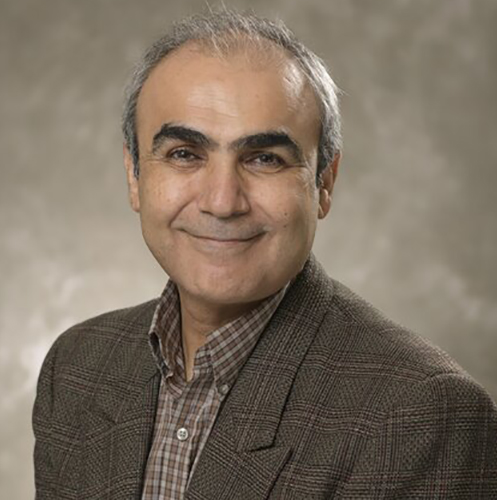
- This event has passed.
Chemistry Colloquium Series: Emad Tajkhorshid – University of Illinois Urbana Champaign
November 10, 2023 | 3:30 pm - 4:30 pm

About the Speaker:
Bio:
Emad Tajkhorshid is Hastings Endowed Chair in the Biochemistry Department, as well as holds additional appointments across multiple colleges that include Chemistry, Bioengineering, Pharmacology, Biophysics and Quantitative Biology, Computational Science and Engineering, and the Carle-Illinois College of Medicine at the University of Illinois. He is also a full time faculty member of the Beckman Institute for Advanced Science and Technology. He joined the faculty of the Departments of Biochemistry (LAS) and Pharmacology (UI COM) in 2007 and was fast tracked to associate professor with tenure in 2010 and then again to the rank of professor in 2013. His tenure dossier was selected as one of the two top UIUC tenure cases on campus. In 2015, Professor Tajkhorshid was named a University of Illinois Scholar, after being nominated by both UIUC and UIC campuses. In 2016, he was awarded the Faculty Excellence Award from the School of Molecular and Cellular Biology at UIUC. Later that year he was named Endowed Chair in Biochemistry. Emad Tajkhorshid directs the leads the NIH Center for Macromolecular Modeling and Bioinformatics and the Computational Structural Biology and Molecular Biophysics Group at the Beckman Institute. Dr. Tajkhorshid has authored nearly 300 research articles (H-index 78) with over 37,000 citations in such high profile journals as Nature, Science, Cell, eLife, and PNAS. He has delivered nearly 200 invited lectures at international meetings, universities, and research institutes. He has served on the Editorial Boards of multiple major journals, including Biophysical Journal, Journal of Biological Chemistry, PLoS Computational Biology, and Biochemical and Biophysical Research Communication.
Research:
The Tajkhorshid Group focuses on developing and applying advanced computational techniques to characterization of biological phenomena, particularly membranes and membrane proteins, with the aim of achieving the most detailed microscopic view of structural and dynamical bases underlying biological function. Major areas of his extensive research portfolio, which have enjoyed continuous support from multiple federal funding agencies (NIH, NSF, DOE, DOD) over many years, include mechanistic studies of membrane transport proteins, principles of energy transduction and coupling in bioenergetic proteins, and lipid modulation of protein function, e.g., in signaling proteins associated with the cellular membrane.
About the Colloquium:
Title:
Atomic-Level Dissection of Membranes and Membrane Protein Function Using Advanced Computational Technologies
Abstract:
Cellular membranes constitute a key component in all living organisms, as a major platform for diverse, critical cellular processes, such as signaling, transport, and cell-cell communication. The depth of our understanding the biology of the cell and physiology of multicellular organisms, therefore, hinges largely on our ability to describe the structure, dynamics, and function of biological membranes and their components (lipids and membrane proteins) at a detailed level.
While modern experimental structural biological and biophysical techniques have substantially elevated our level of understanding, a large fraction of the molecular phenomena in biological systems are still inaccessible to experimental techniques. Computational methods, including molecular modeling and simulation, as well as enhanced sampling techniques and free energy calculations have transformed into indispensable biophysical tools in complementing experiment by offering an approach that simultaneously provides the spatial and temporal resolutions needed for detailed description of complex molecular phenomena. In this talk, I will describe a number of recent computational studies in my lab investigating a variety of membrane-associated phenomena. In the first part, I will summarize our progress in employing non-equilibrium molecular dynamics simulation and advanced free energy methods to describe large-scale structural transitions in membrane transport proteins. Then I will present a number of cases in which we have described lipid-protein interactions and how they modulate membrane protein structure and dynamics, and the free energy landscapes associated with their function. Finally, I will describe the first example in which lipid mediated protein communication is captured. These studies have provided deep insight into the organization of cellular membrane as an active component of a living cell, and molecular its highly regulated interactions and processes that substantiate biological function.